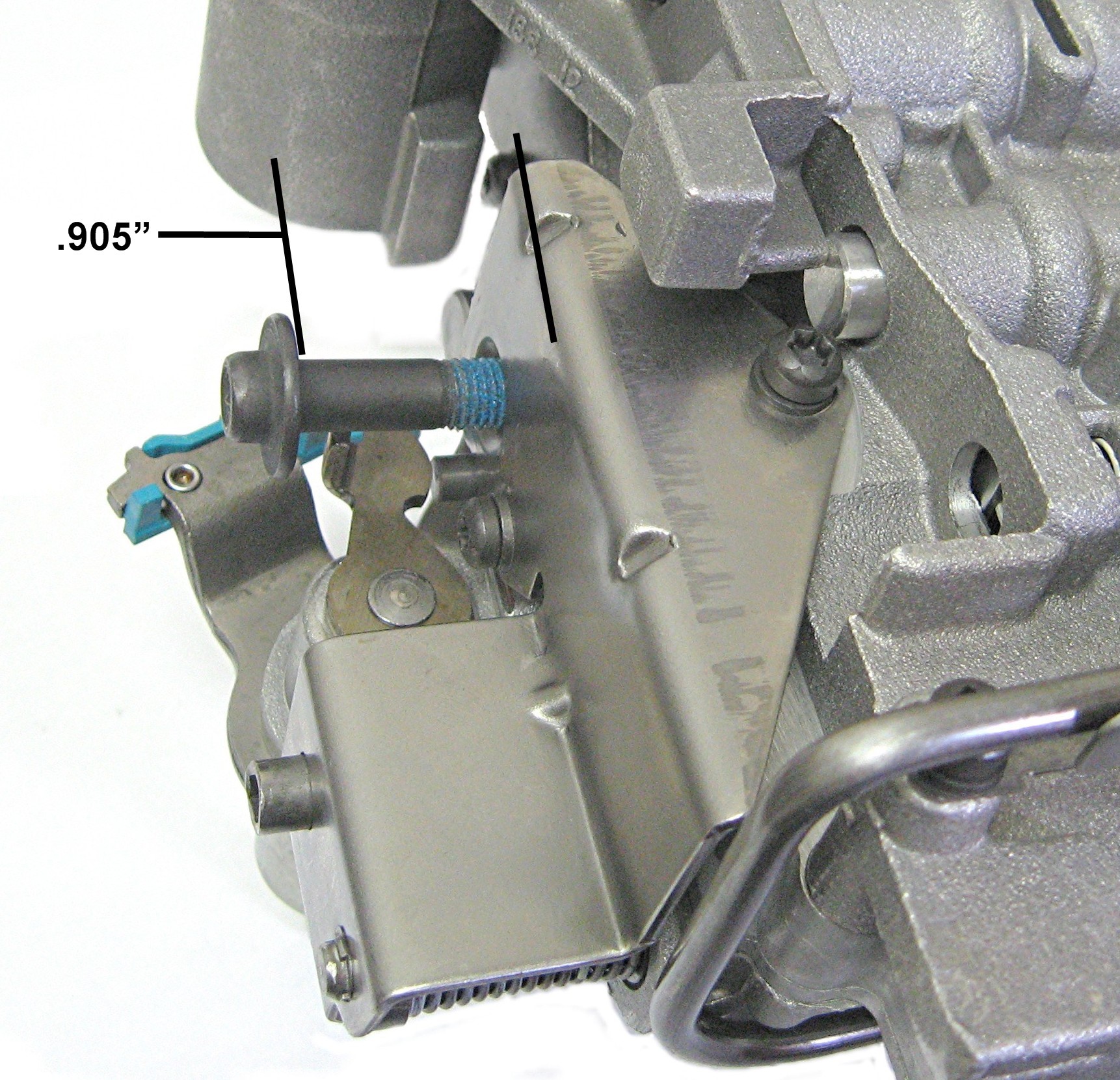48RE Transmission Throttle Valve Actuator Codes
Valve Body Xpress
In 2005, Dodge started using a transmission throttle valve actuator (TTVA) instead of the TV cable on the 48RE diesel 2500 and 3500 Ram trucks. The TTVA is mounted on the case above the throttle valve shaft, and has a DC motor that is controlled by the ECM and two potentiometers as inputs to the ECM. The bottom of the TTVA shaft has a D-shaped opening that fits onto the throttle shaft so it can control transmission throttle pressure.
There are no adjustments for the TTVA, but it needs to be initialized when replaced or removed, and reinstalled on the transmission. To initialize the TTVA, turn the ignition to the "on" position for 30 seconds, which is the amount of time the ECM needs to perform the internal calibration procedures and find the current "zero" position. Every time the ignition is cycled on, the ECM performs the internal calibration procedure to find the current "zero" position.
During the calibrations procedure, the ECM is looking for at least 48 degrees of movement from minimum to maximum span and a minimum range. Both parameters can be affected by the throttle shaft adjustment bolt on the pressure regulator spring retaining bracket. The distance between the bracket and the inside edge of the adjustment bolt head should be .905". Some of the cable activated throttle valve brackets have as little as .820" between the bracket and the inside of the adjustment bolt head. Using the cable-type bracket without changing the setting on the adjustment screw can set a P1751 and/or a P1752.
| Code |
Definition |
|---|---|
| P1749 |
Transmission Throttle Valve Position Sensor Circuit Low |
| P1750 |
Transmission Throttle Valve Position Sensor Circuit High |
| P1751 |
Transmission Throttle Valve Position Minimum Range Perf. |
| P1752 |
Transmission Throttle Valve Span Performance |
| P1753 |
Transmission Throttle Valve Mechanical Performance |
| P1754 |
Transmission Throttle Valve Actuator Stuck |
| P1755 |
Transmission Throttle Valve Control Circuit |
Related Units
Related Parts
While Sonnax makes every effort to ensure the accuracy of technical articles at time of publication, we assume no liability for inaccuracies or for information which may become outdated or obsolete over time.
